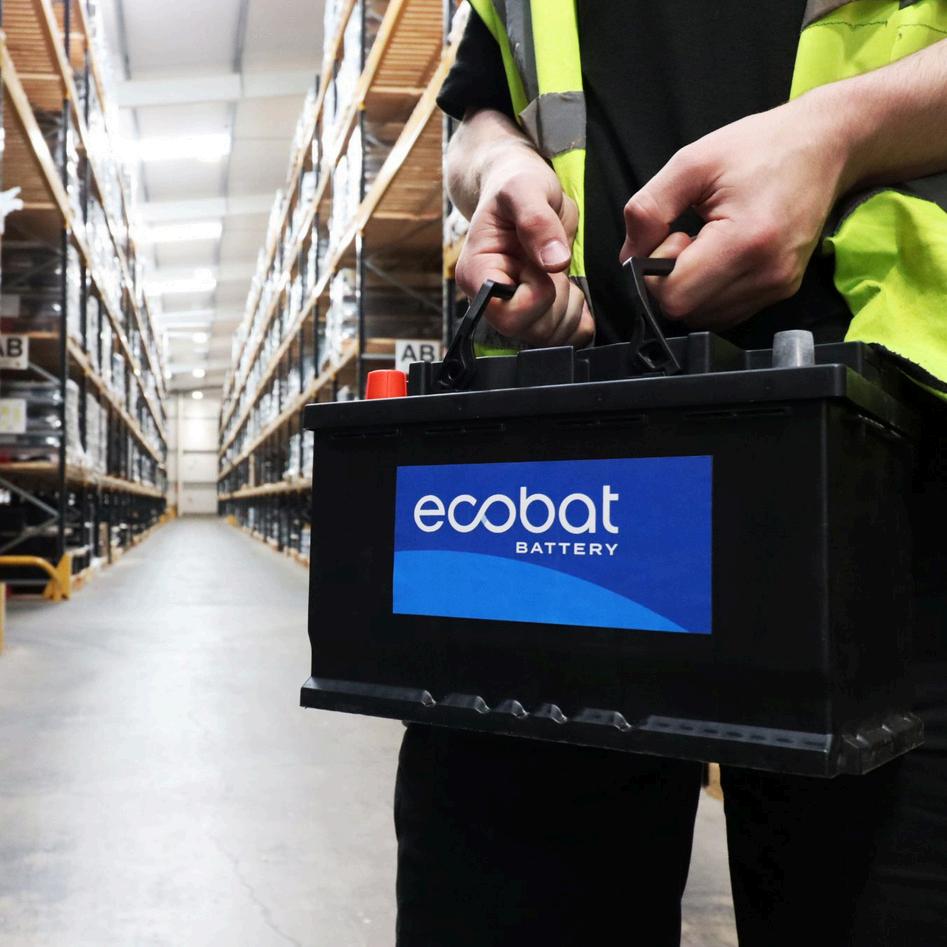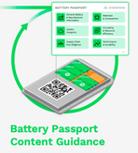

SUSTAINABILITY NEWS
Prepared by S Scruggs and L Sterne
FOCUS TOPIC:
PASSPORT

REGULATION (EU) 2023/1542 OF THE EUROPEAN PARLIAMENT AND OF THE COUNCIL OF 12 JULY 2023 CONCERNING BATTERIES AND WASTE BATTERIES
RECAP ON THE BATTERY REGULATIONS
Our first article regarding the “new” EU Battery Regulation provided an overview and highlighted some of the key elements and changes proposed by the Regulation. We also included the implementation timeframes set out for the Regulation In this edition, we focus on a new concept introduced by the Regulations i.e. the battery passport.
Batteries are an important source of energy and one of the key enablers for sustainable development, green mobility, clean energy, and climate neutrality For the EU’s product policies to effectively contribute to lowering carbon emissions on a global level it needs to be ensured that products that are marketed and sold are sourced, manufactured, and recycled sustainably.
One way the EU intends to meet this challenge is by identifying batteries (i.e. the battery product passport), which will provide information such as origin, composition, and battery specifications The provisions for the battery passport system are set out in Chapter IX of the Regulation.
CATEGORIES OF BATTERIES FIRST THINGS FIRST
Different regulatory requirements are set for battery categories. As far as the scope for a battery passport is concerned it includes LMT batteries, industrial batteries with a capacity greater than 2 kWh and EV batteries.
The below table provides an overview of different battery categories.
Battery Categories Definition and Uses
Electric Vehicle (EV) battery
Light means of transport (LMT) battery
Industrial battery*
Starter, lighter or ignition (SLI) battery
Provide electric power for the traction to hybrid or electric vehicles of: categories L, if larger than 25 kg categories M, N or O
Provide electric power for traction to wheeled vehicles that can be powered by an electric motor alone or by a combination of motor and human power including typeapproved vehicles of category L (i.e. e-bikes and scooters)
Designed specifically for industrial use or intended for industrial uses after being subject to repurposing or any other battery above 5 kg that is not an LMT, EV or SLI
Designed to supply electrical power for starter, lighting or ignition May also be used in auxiliary or backup purposes in vehicles or other means of transport -
Portable battery Not designed specifically for industrial usesNeither an EV, LMT or SLI battery
Portable battery of general use
Rechargeable and non-rechargeable portable batteries specifically produced to be interoperableCommon formats: 4,5 Volts, button cell, D, C, AA, AAA, etc
Providing traction to wheeled vehicles considered as Toys
*Only industrial batteries above 2kWh requires a battery passport
NOTE: the grey blocks represent those batteries that require a battery passport under the Regulation.
A QUICK RECAP ON DIFFERENT ACTORS
The Regulation differentiates between various parties (“Actors”)
Each actor has different roles and responsibilities assigned to it by the Regulations. Some of these actors include:
Distributor meaning a natural of legal person in the supply chain other than the manufacturer or importer that makes batteries available on the market;
Economic Operator means the manufacturer, authorised representative, importer, distributor or service provider or any other natural or legal person who is subject to obligations in relation to the manufacture or preparation for batteries for re-use, repurposing or remanufacturing or placing batteries on the market;
Importer means any natural or legal person established within the Union who places on the market a battery from a third country;
Recycler means any person who carries out recycling in a permitted facility
WHAT ROLE DOES ECOBAT PLAY ?

As previously pointed out Ecobat adopts various roles within the marketplace in relation to batteries. The role that it will fulfill insofar as battery passports are concerned will depend on the services provided by a specific Division within the battery supply chain.
WHAT IS A BATTERY PASSPORT?
The battery passport is an electronic record of an individual battery. To provide information about the sustainability caracteristics of batteries and to upscale circular economy strategies.
HOW WILL THE BATTERY PASSPORT WORK?
Battery Passport design
Information shall be provided via a data carrier (i.e. QR code). The QR code must be marked on all batteries providing access to its information that shall be linked to a unique identifier (i.e. web link to the battery passport).
Data Storage
At this time we only know that he battery passport should be based on a decentralised data system, to be set up and maintained by economic operators. Selected data may also be stored by the European Commission in a product passport registery. More details to follow.
Data Access

Actors must have access to the battery passport free of charge. Groups identified include: the general public, market surveillance authorities, and any person with a ligitimate interest.
WHO IS RESPONSIBLE FOR THE BATTERY PASSPORT?
Due Diligence Requirements
The economic operator placing the battery on the market is responsible for the battery passport. However, where the battery has not yet been placed on the market, the responsibility will be that of the actor who is putting it into service.

To determine the above, the Battery Pass Consortium published a Battery Content Guidance document which sets out a decision tree that can be used to identify the responsible economic operator for the battery passport throughout the battery value chain - see below:

WHAT IS IN A BATTERY PASSPORT
The battery passport shall contain information relating to the battery model and information specific to the individual battery, including resulting from the use of that battery, as set out in Annex XIII
WHEN MUST A NEW BATTERY PASSPORT BE CREATED, UPDATED OR EXPIRE?
Creating the Battery Passport
By putting a battery into service or placing it on the market the economic operator is responsible for fulfilling the requirements laid out in Article 77 of the Regulation including the creation of a battery passport as well as ensuring the data is “ up to date”
After the original battery passport has been created, the battery will undergo certain operations along its life cycle that require modifications of data attributes (mostly dynamic, but also static data). Depending on the type of handling operation, this may either involve an update to the existing battery passport or the creation of a new one
Re-use represents the only battery handling operation that may require updates in the battery passport but does not warrant a new battery passport The term re-use includes any operation by which products or components that are not waste are used again for the same purpose Maintenance and repair of nonwaste batteries comprise the most relevant operations covered by this term However, if the repair is done on a waste battery, it is defined as preparation for re-use and a new battery passport is required.
A battery passport shall cease to exist after the battery has been recycled. However, it is not clear who the responsible actor in this instance would be Furthermore, the Regulation does not specify at which point in the recycling process, which potentially involves multiple entities, the battery is considered recycled
This said we are aware that when the status of the battery changes to a waste battery (i e this occurs when the holder discards or intends/is required to discard the battery) the responsibility is transferred to either the producer or waste management operator In these instances, a new battery passport is not required.
TIMEFRAMES FOR IMPLEMENTATION OF BATTERY PASSPORTS
Per the Regulations, Chapter IX which sets out the requirements and implementation for a Digital Battery Passport System will come into effect on 18 February 2027.
As is evident from the above we have only scratched the surface of what will be required going forward, but we will be sure to keep you in the loop on new developments to ensure a smooth transition.
